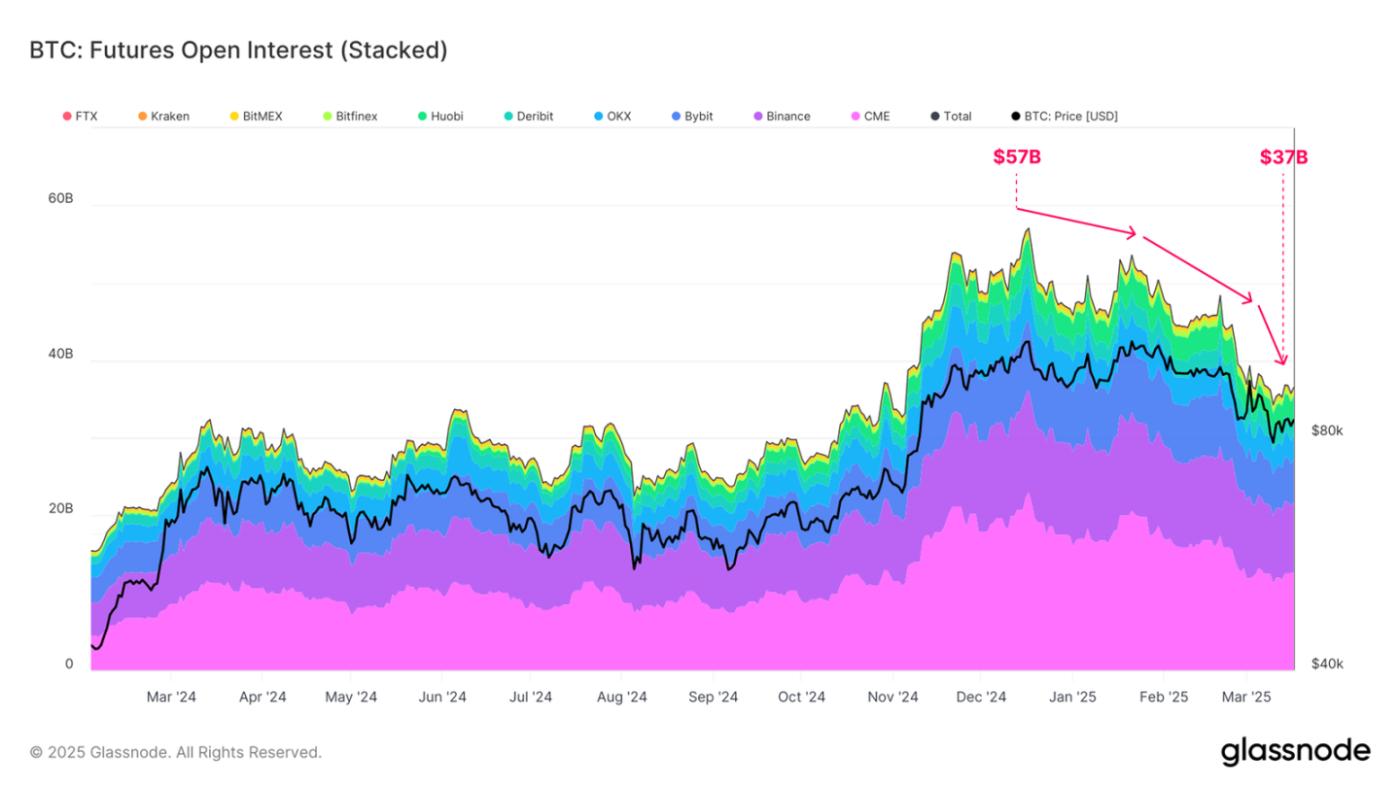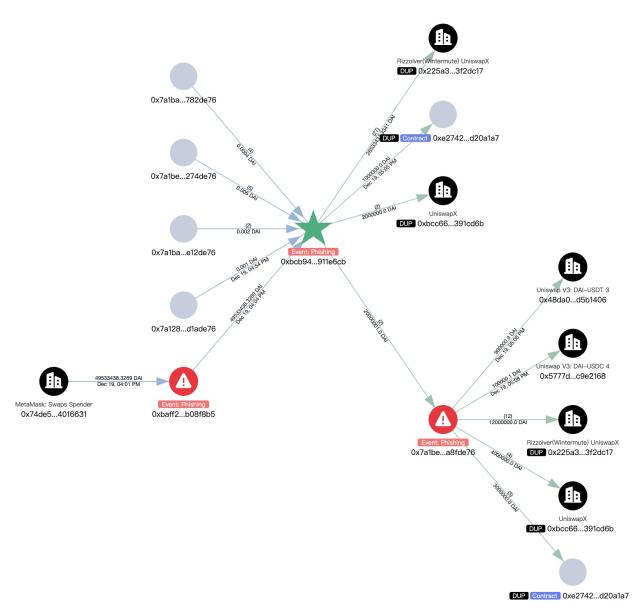Recently, after experiencing a bull market boom, the crypto asset market has begun to show signs of liquidity contraction and changes in investor risk appetite. On-chain data and key derivatives market indicators suggest that the market is transitioning from a high-volatility, high-speculation state to a more cautious, low-liquidity phase. On-chain activities of Bitcoin and Ethereum show a significant decrease in hot supply, with notably reduced exchange fund inflows.
Is the current market at a turning point? Is it a bull market reversal or the end of a bull run? How can investors seize opportunities amid shrinking liquidity and adjusting risk appetites? This article aims to analyze the current market environment based on on-chain activities of Bitcoin and Ethereum, exchange fund flows, and market dynamics.
Overall Liquidity Tightening and Decreased Market Activity
According to glassnode data, Bitcoin on-chain activity has dropped to levels not seen in months, with a significant decrease in transaction numbers, often indicating a consolidation period after high volatility. Bitcoin's "Hot Supply" - an indicator measuring active market capital, representing Bitcoin held for less than a week - has declined from 5.9% to 2.8% over the past three months, showing over 50% reduction, further substantiating the liquidity contraction phenomenon.

From on-chain transaction numbers alone, Bitcoin's on-chain activity has also dropped to unseen levels in months, indicating a cooling period or short-term interest decline. The reduction in transaction numbers seemingly implies decreased speculative activity. If long-term holders are not selling and new fund inflows are limited, the market may enter an accumulation phase.

Simultaneously, Bitcoin miners' share of total on-chain transactions has dropped to 4.23%, the lowest since November 2022. This data reflects a significant decrease in miners' on-chain transaction participation. Lower transaction share might indicate miners are reducing selling behavior, more often choosing to hold coins to address market fluctuations, thereby reducing selling pressure from miner liquidations.
The relative decline in miner transaction volume could also mean increased activity from other market participants like long-term holders or institutional investors, signaling a change in overall on-chain transaction structure. Against the backdrop of market changes and declining mining revenues, miners might be adjusting strategies, reducing frequent on-chain transactions, and focusing resources on optimizing revenue structures.

In the futures market, total open interest has declined from the ATH of $57B to $37B, a drop of approximately 35%, indicating significantly reduced hedging and speculative activities.
Concurrently, after the US spot ETF launch in 2024, institutions previously gained arbitrage profits through cash arbitrage (longing ETF + shorting futures) in upward markets. However, with weakening market confidence and long-side arbitrage unwinding, arbitrage trades have gradually withdrawn, causing ETF fund outflows and further downward pressure on the spot market.

Ethereum Exchange Supply Drops to Near 10-Year Low
According to crypto market analysis institution Santiment, due to DeFi protocols and staking products, available ETH exchange supply has dropped to 8.97 million (equivalent to $18 billion at current prices, less than 7.5% of Ethereum's current market cap), the lowest in nearly 10 years (previous low was November 2015). Compared to just 7 weeks ago, ETH on trading platforms has reduced by 16.4%.
The drop in Ethereum exchange supply to a near 10-year low indicates significant market liquidity tightening. Lower exchange supply means reduced ETH available for selling, decreasing potential selling pressure, but also making prices more susceptible to large transactions and increasing volatility.

However, in the current state, despite the supply decline showing enhanced asset locking effects, overall market environment and multiple factors still exert downward price pressure. Current macroeconomic uncertainty, shifting market risk appetite, and partial institutional fund withdrawals further tighten market liquidity.
Simultaneously, DeFi sector volatility and competitive public chain developments negatively impact Ethereum's market expectations. In this context, while lower exchange supply reduces potential selling pressure, unfavorable market sentiment and external environment continue to drive prices downward.
Using indicators to assess its current state, according to IntoTheBlock data, ETH's MVRV (Market Value to Realized Value) has dropped to around 0.8. This level is uncommon in Ethereum's history, typically occurring during bear markets.
MVRV is typically used to compare the relationship between a token's market value and realized value, reflecting the token's supply-demand dynamics and helping detect whether the current market price is undervalued or overvalued. It's also used to identify potential market tops or bottoms.

Summary
Historically, Bitcoin experienced a stage of consolidation before a rally in October 2023. Whether the market will repeat a similar pattern requires further observation. Some analysts, like CryptoQuant founder and CEO Ki Young Ju, suggest the short-term bull market cycle might be nearing its end, with prices more likely to show a bearish or sideways trend in the next 6 to 12 months.
However, the Federal Reserve's recent signals of loose monetary policy and market expectations of quantitative tightening ending and potential quantitative easing restart have also brought some liquidity. BitMEX co-founder Arthur Hayes tweeted, "Powell has fulfilled his promise, quantitative tightening (QT) essentially ended on April 1st. To truly drive the market into a bull market, either SLR exemption policy needs to be restored or QE restarted. $77,000 might be Bitcoin's bottom, but the stock market might need more volatility before Jay fully leans towards the Trump team. So everyone needs to stay flexible and keep cash on hand."
In this environment, the market's bottom and subsequent reversal remain uncertain. Investors still need to closely monitor overall market liquidity, on-chain fund flows, and further changes in institutional whale behaviors. For instance, IntoTheBlock has detected that although whale balances have continuously declined over the past year, March data hints at a potential reversal. Currently, whales' holdings have increased by approximately 62,000 BTC compared to early this month, showing signs of re-accumulation.

Overall, the current market is experiencing an adjustment from a high-risk, high-volatility bull market to a low-liquidity, risk-averse situation. Short-term market sentiment leans pessimistic, with insufficient fund inflows and arbitrage trade unwinding continuing to exert downward price pressure. However, the stability of long-term holders and re-accumulation by some whales may provide necessary support for the market in the future.







